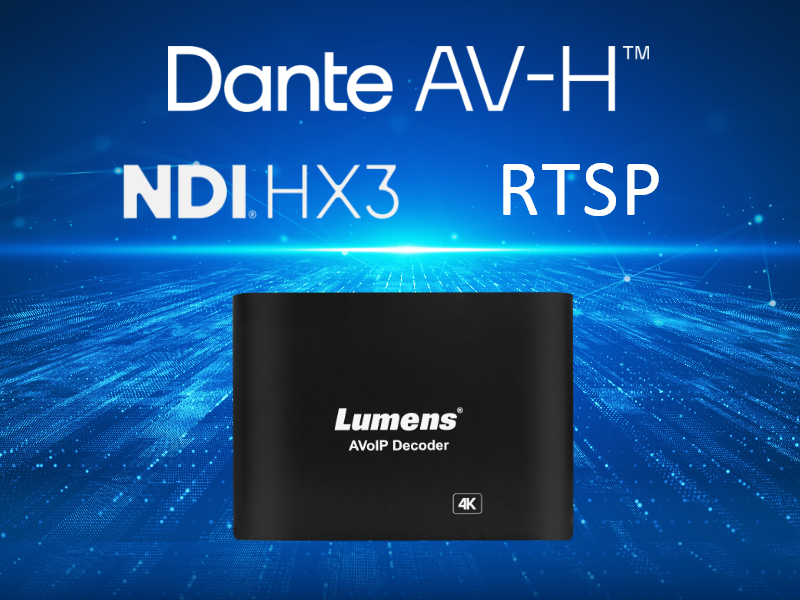Why IP: An AV Guide
Written by Kieron Seth, Product Marketing Director at Lumens
July 07, 2025 4420

- AV works. But progress is inevitable
- Why now is the right time for IP
- AV to IP: the Bumps in the Road
- Lumens IP Solutions
▶ AV works. But progress is inevitable.
The AV industry knows how to do things. It has decades of experience fine tuning its skills and technologies to provide clients with high quality sound and audio and a level of reliability that is simply outstanding.
So, what is the problem? There is no real problem, but sometimes the next generation technology is such an advance that AV departments will put up with the steep learning curve.
An analogy. Sales of radio sets in the USA have reduced from around 20 million a year to approximately 4 million in 2024. At the same time, the numbers actually listening to radio content has increased by an estimated 75 million. How has this happened? Consumers have adapted to new (and far more complicated) ways of listening, including radio over satellite broadcast, DAB, smartphone apps, podcast downloads and online streaming portals. The technology has fragmented the way people tune in and created multiple ways to consume the same content. The technical pain and development costs have paid off richly for producers and consumers alike.
▶ Why now is the right time for IP
How does this relate to AV? Digital and analog video and audio have been mature and stable for years. A backbone of HDMI, DVI, SDI, coax, BNC, XLR and fiber (among other cable types) have provided all the transmission, routing and switching that users needed. The result has been very low latency, security, reliability and high quality.
If this mature approach to AV is so good, why is there such a rush to replace it? It's all about IP. IP promises to overcome many of the complexities and idiosyncrasies of 'old' AV. Let's take a look at some of the major advantages of IP for AV.
1. Scaling your AV network with IP
Take a typical HDMI matrix switcher. It can input and output 8 HDMI signals. This is fixed in hardware. If you need to add more displays, it’s time to invest in a 16x16 switcher. With HDMI, typical cable lengths extend to 10 meters. Need to go further? That’s no problem: HDBaseT technology converts the video for transmission over 100-metre Cat cables. Unfortunately, in both cases, new cables are required. Long HDMI wiring is expensive. Cat 5 and 6 copper is well priced, but HDBaseT requires a separate point-to-point cable installation.
With IP, audio and video can be transported and routed across an existing 1G or 10G LAN infrastructure. With use of a VLAN (Virtual Local Area Network), AV signals can reside on IT networks with no additional hardware cost. This makes IP networks tremendously scalable: users can dynamically add more sources, end points, controllers and processors while using existing network infrastructure.

2. IP Delivers Signal Routing Flexibility
A legacy baseband network (coax, HDMI or SDI) can be used for the transmission of video to cross-facility displays in airports, hospitals, campuses and shopping centers for example. By transitioning to an Ethernet-based infrastructure, setting up a network of encoders and decoders allows for a much more flexible, scalable and dynamic AV over IP solution. Each IP video source can be sent to specific screens or groups of screens. Displays can be added simply by adding a decoder to any Ethernet port. And the full AV network can be controlled from any location.
This flexibility is just as valid on the smaller scale. In a boardroom, a control interface can quickly switch the active camera or select the microphone source for particular room layouts. This is particularly important in divisible rooms where a partition creates two spaces. In this case, changing the camera and sound system from a single solution to two distinct set-ups can be done very simply in an IP environment. There is no hardware to change or matrix switcher to re-configure – it's all done with a touch on the control system.
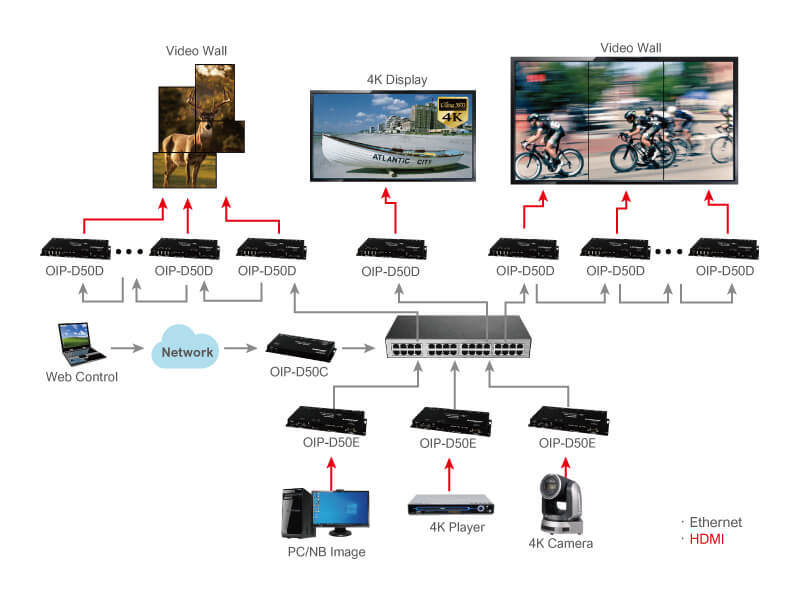
3. Power and the Environment – why IP is Inherently Greener
The popularity of IP based equipment such as cameras and network decoders has encouraged manufacturers to develop ever more energy efficient devices. Why is this? Many IT networks support power over Ethernet (PoE), meaning that low energy IP devices can be operated without the need for AC adapters. This saving in consumption and in the manufacturing of unnecessary power blocks has clear environmental benefits, over and above the capability for AV over IP systems to use existing Cat cabling.
Indeed, many legacy products require multiple cables: an AC power cable, dedicated audio and video cabling, plus an Ethernet or proprietary control cable. With IP, users can transmit and receive audio visual streams, power and control their equipment with a single cable.
4. Network Control
Another benefit of IP is the ability for network-based control – again, no proprietary cabling is necessary. Simply attach a hardware or software controller to the network (again this can be PoE enabled). Multi-site and even multi-continent organizations can globalize their support operation, managing multiple IP networks from remote locations to provide savings and efficiencies undreamt of in the AV world until very recently.
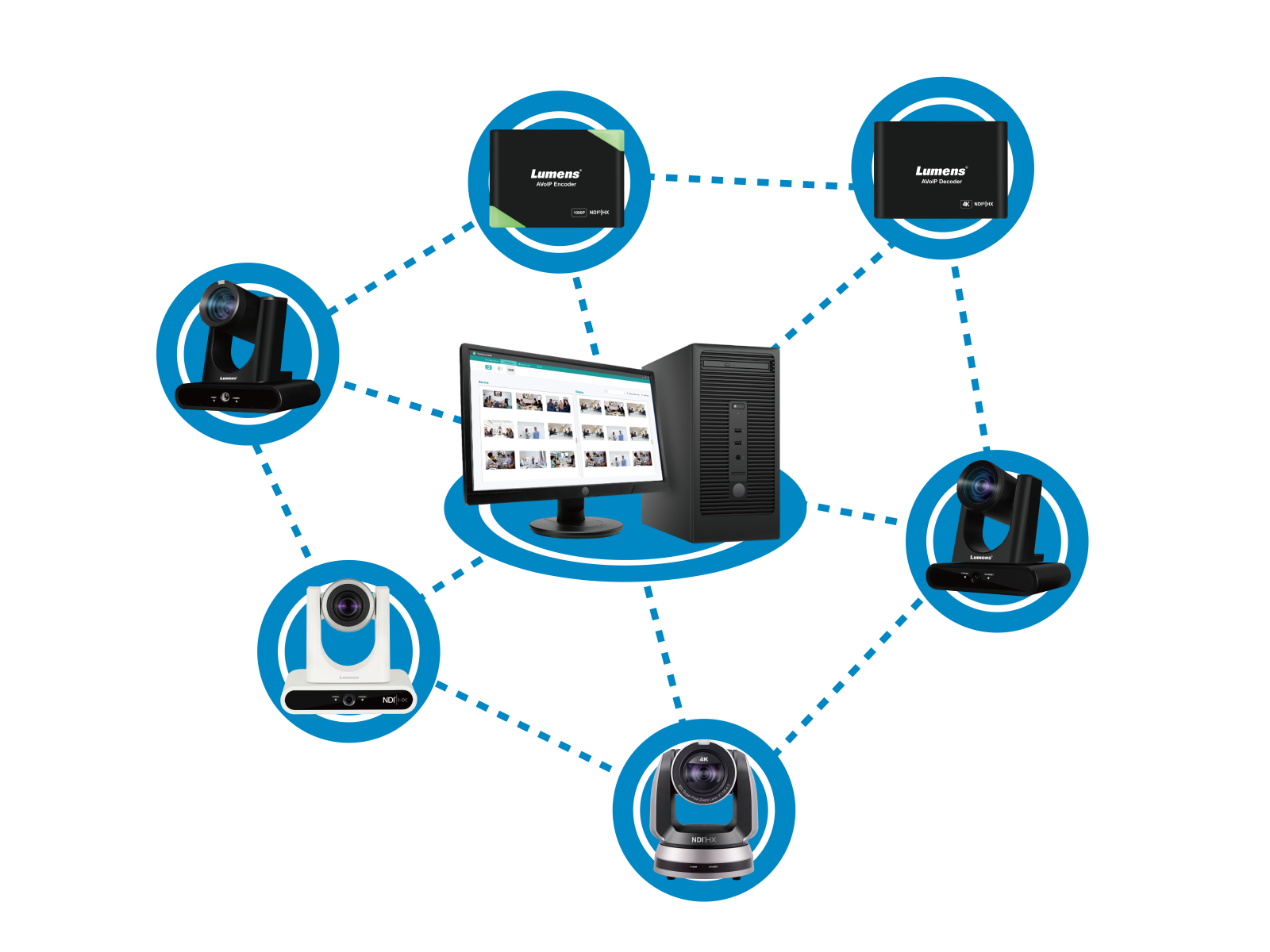
5. IT and Network Management
The same goes for network and device management: both can be centralized, enabling system administrators and network managers to oversee hundreds of products installed on the network. Not only does this reduce the travel time for the AV team, but it also provides for exceptional operational efficiencies: power schedules, maintenance routines, firmware updates and user access are all managed remotely. The time and cost-savings compared with managing each device individually cannot be understated.
6. Securing Devices, Encrypting Streams
Managers can protect each IP device remotely using password authentication. More importantly, they can secure every stream on the network. Formats such as Dante AV-H and technologies like NDI Bridge enable AES256 encryption and the private routing of individual streams between specific devices. In this way, a livestream of health or financial information can be transmitted between selected users without fear of confidential data being compromised.
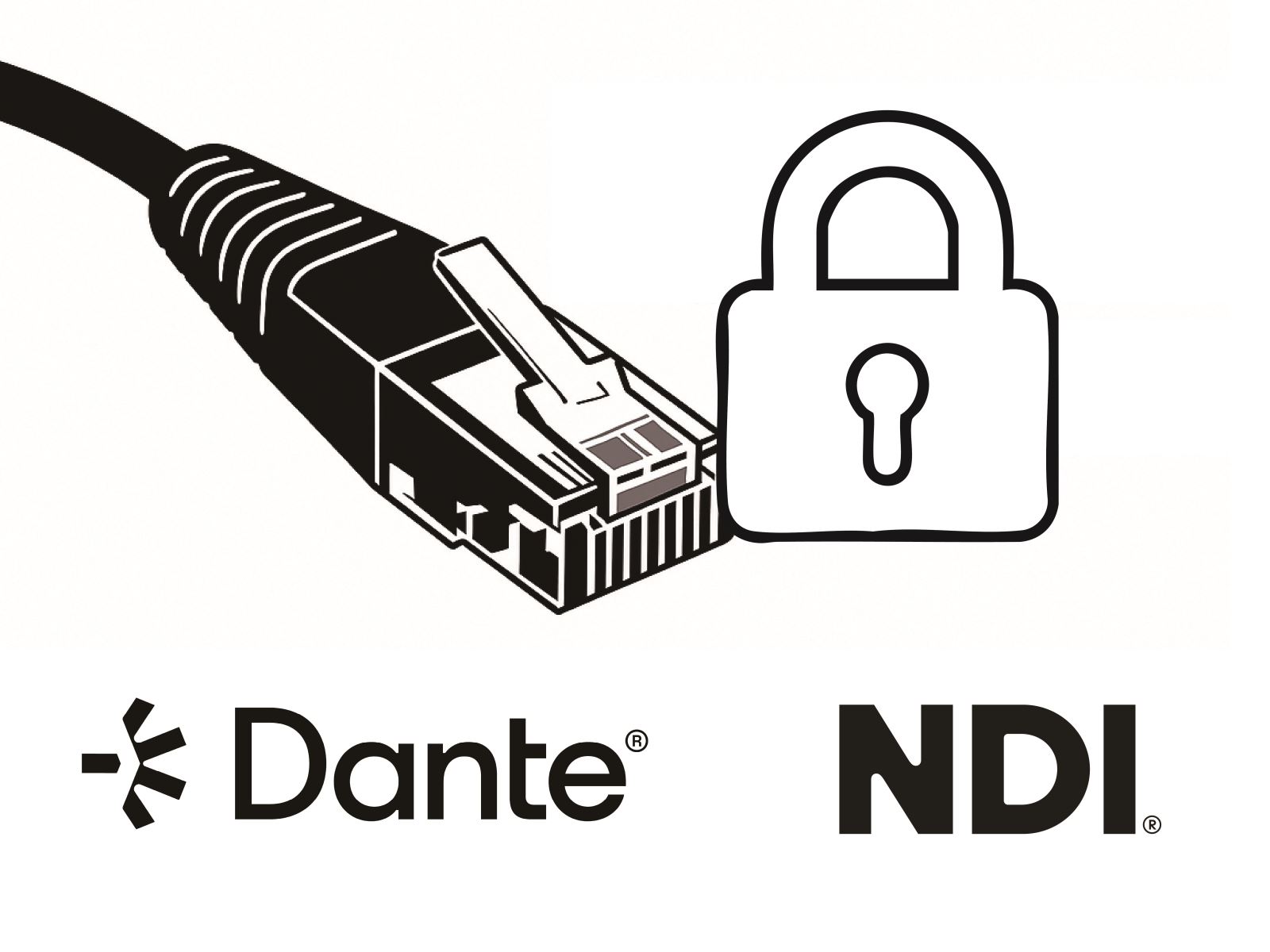
7. The Future-proofed AV Network
Traditional video hardware is specified to handle specific formats: a 2160 30P recorder cannot handle 2160 60P; an HD switcher is incompatible with 4K signals. Not so with an Ethernet-based installation: a 1G or 10G network can both handle multiple streams of HD, 4K or 8K. Modern codecs such as Dante AV-H or NDI HX intelligently compress video while preserving all-important picture quality. Incremental upgrades to the IT network will inevitably increase the bandwidth available for AV – allowing for ever greater scale and capability.
▶ AV to IP: the Bumps in the Road
The second issue revolves around skill and experience. Broadly speaking, the AV industry is still coming to terms with ideas such as VLANS, subnets and firewalls. Therefore, a close relationship between the IT department with the AV team is essential to ensure reliable, high quality and secure video and audio networking. For traditional AV teams, there's unquestionably a need for new IT training and greater networking expertise.
▶ Lumens IP Solutions
Lumens began its transition to IP with its early PTZ and block cameras. First supporting control over a LAN (Visca over IP), this quickly developed into power, video, audio and control via a single Ethernet cable. Today, virtually every Lumens camera has IP technology at its heart, including:
- Media Processors: multi-channel switchers, recorders and streaming systems with support for IP inputs and outputs, and all-important IP to video decoding and video to IP conversion.
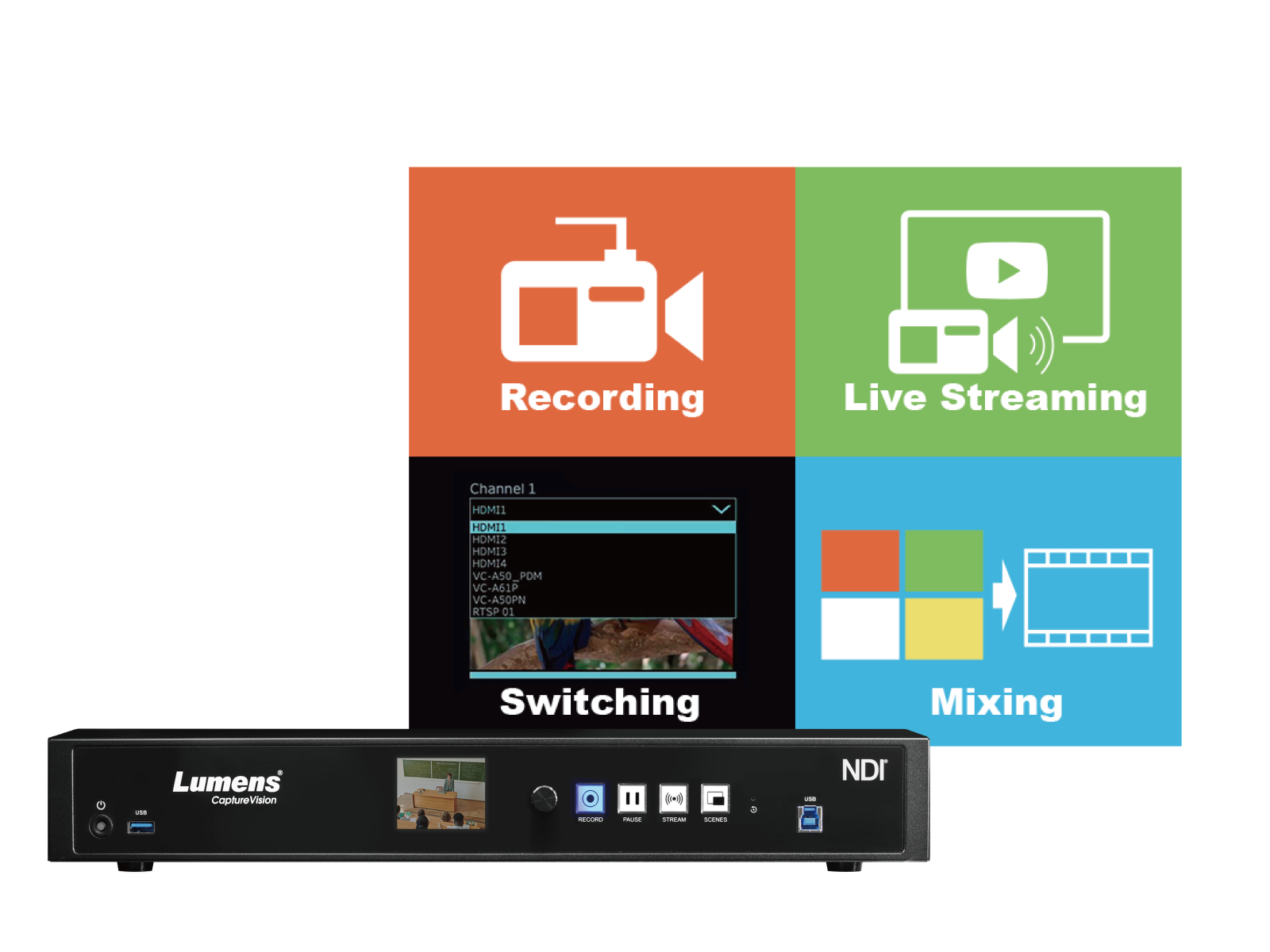
- Dedicated Converters: Lumens OIP Bridge series supports NDI HX, Dante AV-H, Dante Audio and RTSP transmission and transcoding. With HDMI, USB-C and DisplayPort, these units are optimized for AV and unified communications.
